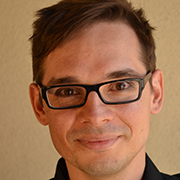In his Concerto for Piano and Orchestra, Miroslav Srnka has the piano soloist enter into a multifaceted dialogue with four instrumental groups from the orchestra. The result: multiple-layered counterpoint.
Some regard the piano concerto as the supreme discipline amongst instrumental concertos, nevertheless, as an “orchestra in ten fingers”, the piano can constitute a particularly weighty counterpart to the large symphonic ensemble in both complexity and volume. In his concerto for Nicolas Hodges and the Radio Symphony Orchestra Vienna, conductor Cornelius Meister, Miroslav Srnka has created a work which is a kaleidoscopically-mirrored sonority of the piano. The solo piano, homogeneous-sounding in itself, enters into an exchange with some of the instrumental families revealed, or more precisely, four groupings, each of which is characterised by an inner tonal homogeneity: horns with bassoons, strings, clarinets with brass, and finally the melody instruments of the percussion. These groups and the piano operate fanning out contrapuntally in structures which are constantly developing and generating further in themselves. A kind of multiple layered heterophony emerges, as if these families of voices would move differently in the space and meet up time and time again to form blended expanses. The piano matches these highlighted soloistic instrumental groups in a constant, meandering sounding continuum.
Each sounding of a piano note is combined with an initial impulse.
Consequently, any continuity, any flow can be formed from a stringing together of the individual impulses. Srnka approaches the idea of flowing in his Concerto as in his previous piano compositions. Starting from the smallest possible forms of movement, the trill and tremolo, he composed ta vetší for piano solo in 2006. In his piano quintet Pouhou vlnou (Qu’une vague), written in 2008, the composer expands the limits with larger, ornamental models, with the genesis of constantly new figurations and patterns. Almost untranslatable, the piano quintet’s title describes the flow of the waves, of shimmering gurgling to the massive attack, the music traverses wide spaces with a wide ambit in all parameters – dynamic, density of sound and tempo, as well as register. The water, the material, does not change, rather its multiple broken, constantly varying manifestations do change in the linear movement.
The flexible, flowing, tremendous brilliance of the piano and the individual instrumental families meet in the high points and generate kaleidoscopic, flamboyant structures. The luminescence of the instrumental collectives consolidates into a stunning play of colours.
Formally, the one-movement 25 minute-long work accomplishes several arcs of tension, like several alternating focussed movements. The multiple interwoven lines of movement repeatedly form a turning round from the individual movement to the collective explosion, a breaking and in turn a grouping of the sound continuum. The virtuosity of the piano is incorporated into this movement structure, “in a flowing transition from a simple interval up to a cluster in the same piano technique, which then flowers when the whole structure tips over into kaleidoscopic transformations” (Srnka).
Marie Luise Maintz
(translation: Elizabeth Robinson – from [t]akte 2/2012)



